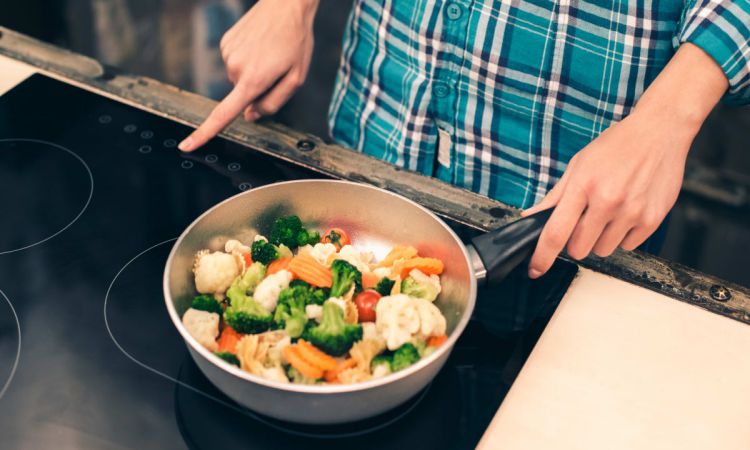 Induction cooktops differ from conventional counterparts like gas or electric burners. When you switch on this mechanism, a copper wire coil induces an electric current to the Lagostina cookware on an induction range.
Induction cooktops differ from conventional counterparts like gas or electric burners. When you switch on this mechanism, a copper wire coil induces an electric current to the Lagostina cookware on an induction range.
Once the pot placed on your induction stovetop is exposed to resistive heating, it cooks the food within. As a home cook, opting for induction cooking over traditional modes is advisable for the listed reasons:
- Higher energy-efficiency
- Cooking surface is safer as it stays cool after usage
- Heating food is quicker as you can instantly adjust the heat with precision
- This cooktop responds better to alterations in temperature control
- No wasted heat
Compatible Cookware
On activation, the copper coil positioned below the induction range’s surface generates heat as it comes in contact with your vessel’s magnetic material. For this reason, cast iron, stainless steel, and carbon steel cookware are most suitable for induction cooking.
For example, stainless steel Lagostina cookware works on an induction range. To check induction stove compatibility, you can hold a magnet to the bottom of your pan. If it tightly clings to the vessel’s underside, it means your vessel is compatible with an induction cooktop.
Ideally, induction cookware contains steel, magnetic iron, or metal as these are the commonly compatible materials.
Stainless Steel
All stainless steel cookware is not created equal. The higher-end ones have copper and aluminum cores sandwiched between the steel layers on the interior and exterior sections. These core provisions are better conductors of heat than stainless steel alone. Therefore, they ensure equal heat distribution while cooking.
Seasoned Cast Iron
Although it slowly heats and cools, this material allows for an even cook on attaining the cooking temperature. When properly cared for, heavy-duty and seasoned cast iron pans and pots last a lifetime.
Carbon Steel
Considering cast iron is heavy, carbon steel is a lighter alternative. This material is ideal for induction hob cooking, given they are more responsive to changes in temperature.
Graniteware
You can identify granite cookware by its exterior speckled, porcelain coating. Although this cookware is budget-friendly, its non-stick enamel coating tends to flake off with time.
Do not place your aluminum, glass, or copper cookware on your induction hob, as these are not designed for such ranges. Some manufacturers are now equipping modern copper and aluminum pans with a magnetic base to make them compatible with induction cooktops.
Important Considerations
When expanding your induction cookware collection, select pots, and pans that tick the following checkboxes:
- Premium quality and heavy gauge cookware marked as induction ready
- Wide and flat base to ensure uniform heating and minimize vibrations
- Sturdy lids that sit securely
- Durable, well-attached, and heat-resistant handles also help to manage the vibration at high power levels
- The pan’s base should be a perfect match to your induction cooking zone to facilitate the creation of the magnetic field
Access valuable insights on induction cooking from experts who introduce you to relevant facts you must know beforehand.
Replacing your old pans and pots for induction compatible ones becomes easier when you are equipped with the necessary information.




